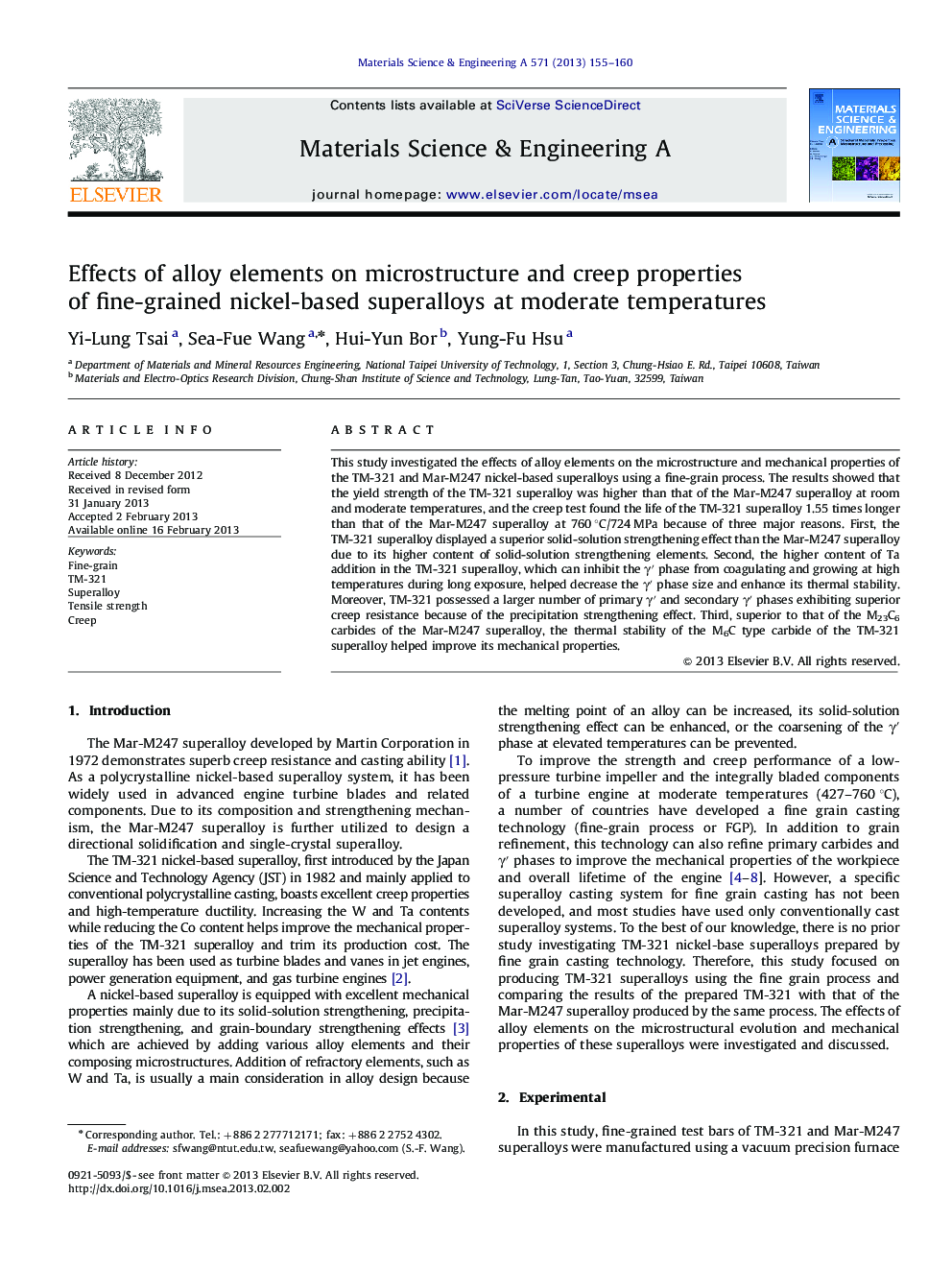| Article ID | Journal | Published Year | Pages | File Type |
|---|---|---|---|---|
| 1576266 | Materials Science and Engineering: A | 2013 | 6 Pages |
Abstract
This study investigated the effects of alloy elements on the microstructure and mechanical properties of the TM-321 and Mar-M247 nickel-based superalloys using a fine-grain process. The results showed that the yield strength of the TM-321 superalloy was higher than that of the Mar-M247 superalloy at room and moderate temperatures, and the creep test found the life of the TM-321 superalloy 1.55 times longer than that of the Mar-M247 superalloy at 760 °C/724 MPa because of three major reasons. First, the TM-321 superalloy displayed a superior solid-solution strengthening effect than the Mar-M247 superalloy due to its higher content of solid-solution strengthening elements. Second, the higher content of Ta addition in the TM-321 superalloy, which can inhibit the γⲠphase from coagulating and growing at high temperatures during long exposure, helped decrease the γⲠphase size and enhance its thermal stability. Moreover, TM-321 possessed a larger number of primary γⲠand secondary γⲠphases exhibiting superior creep resistance because of the precipitation strengthening effect. Third, superior to that of the M23C6 carbides of the Mar-M247 superalloy, the thermal stability of the M6C type carbide of the TM-321 superalloy helped improve its mechanical properties.
Related Topics
Physical Sciences and Engineering
Materials Science
Materials Science (General)
Authors
Yi-Lung Tsai, Sea-Fue Wang, Hui-Yun Bor, Yung-Fu Hsu,
